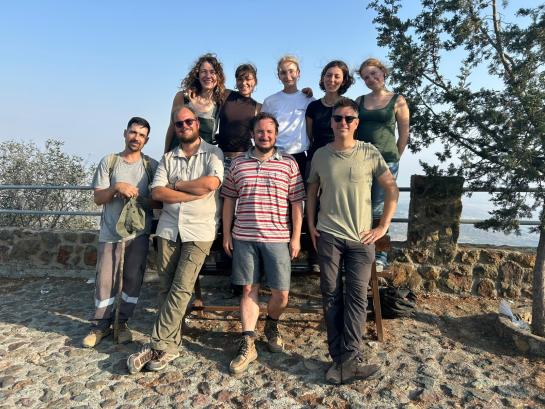
The 2025 field season of the Hala Sultan Tekke Hinterland Project has been successfully completed. This year’s campaign, organized by the Vrije Universiteit Brussel in close collaboration with the Department of Antiquities of Cyprus, continued our long-term investigation into the settlement history and human–environment dynamics of southeastern Cyprus.
The 2025 campaign combined two complementary approaches: a geophysical prospection and an intensive archaeological fieldwalking survey. Together, these efforts aimed to refine our understanding of how communities in the Dromolaxia–Pyrga region lived, worked, and interacted with their landscape over time.
In collaboration with Dr. Igor Medarić from the University of Zurich, who coordinated the geophysical component of the campaign, the geophysical team conducted targeted magnetometry prospection in both the Dromolaxia and Pyrga areas. The surveys successfully detected numerous subsurface anomalies—possible traces of ancient buildings, installations, and other features. The magnetic data provided detailed insights into the depth and preservation of these remains, setting the stage for follow-up studies.
Meanwhile, our fieldwalking survey team continued the systematic exploration of the wider hinterland. Through intensive tract walking and total collection, we investigated the final gaps in the Dromolaxia area and extended our coverage around Pyrga which we have built up in previous years. The campaign yielded new concentrations of archaeological material, including pottery and lithics, adding valuable evidence for understanding habitation patterns and economic activities from the Bronze Age to the Late Antique period.
Beyond the scientific results, the campaign was marked by strong teamwork, productive collaborations, and inspiring exchanges in the field. With both new data and promising geophysical targets, the 2025 season represents a significant step toward reconstructing the long-term evolution in human activity around the Hala Sultan Tekke hinterland.
